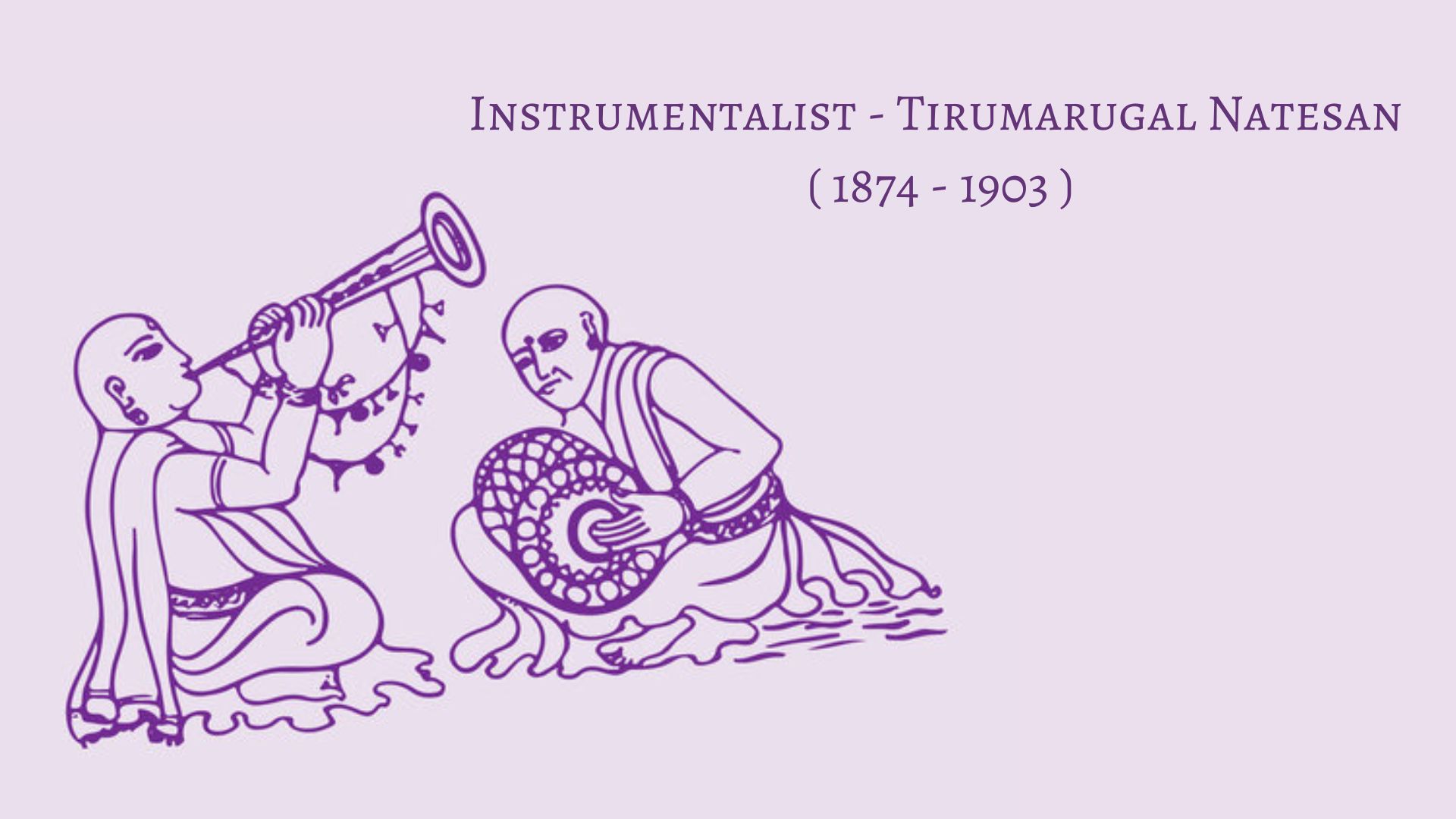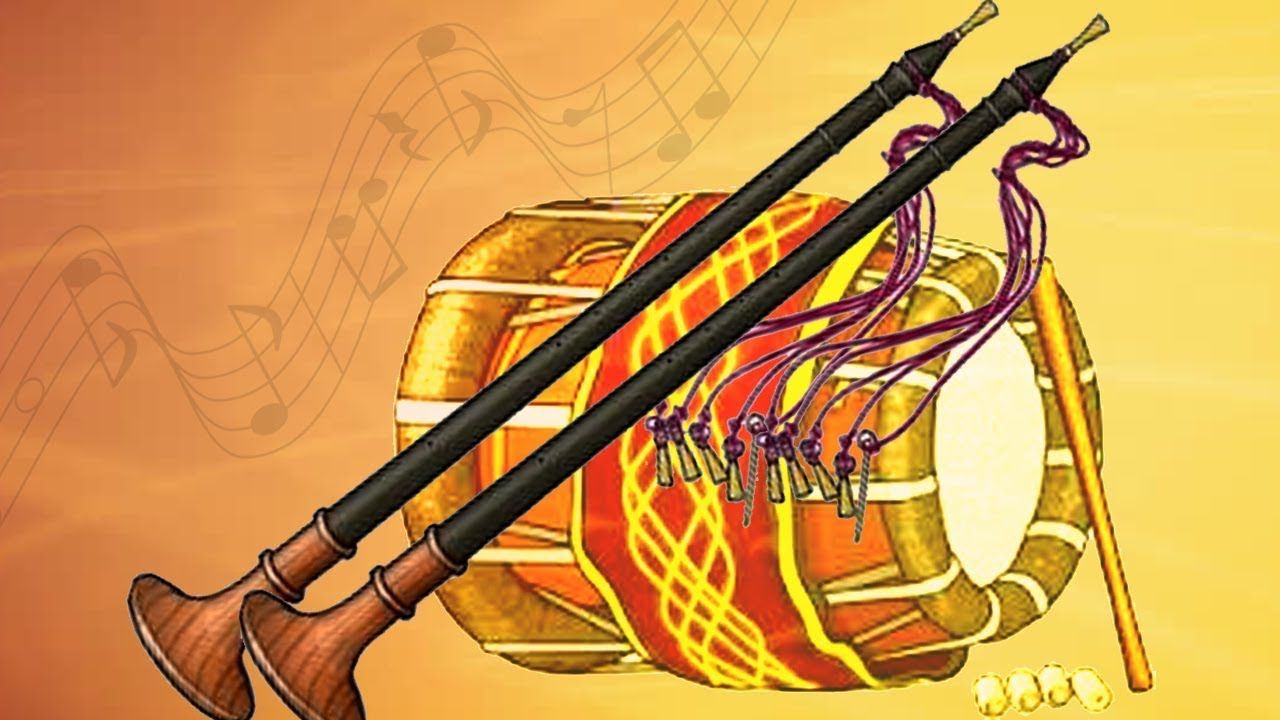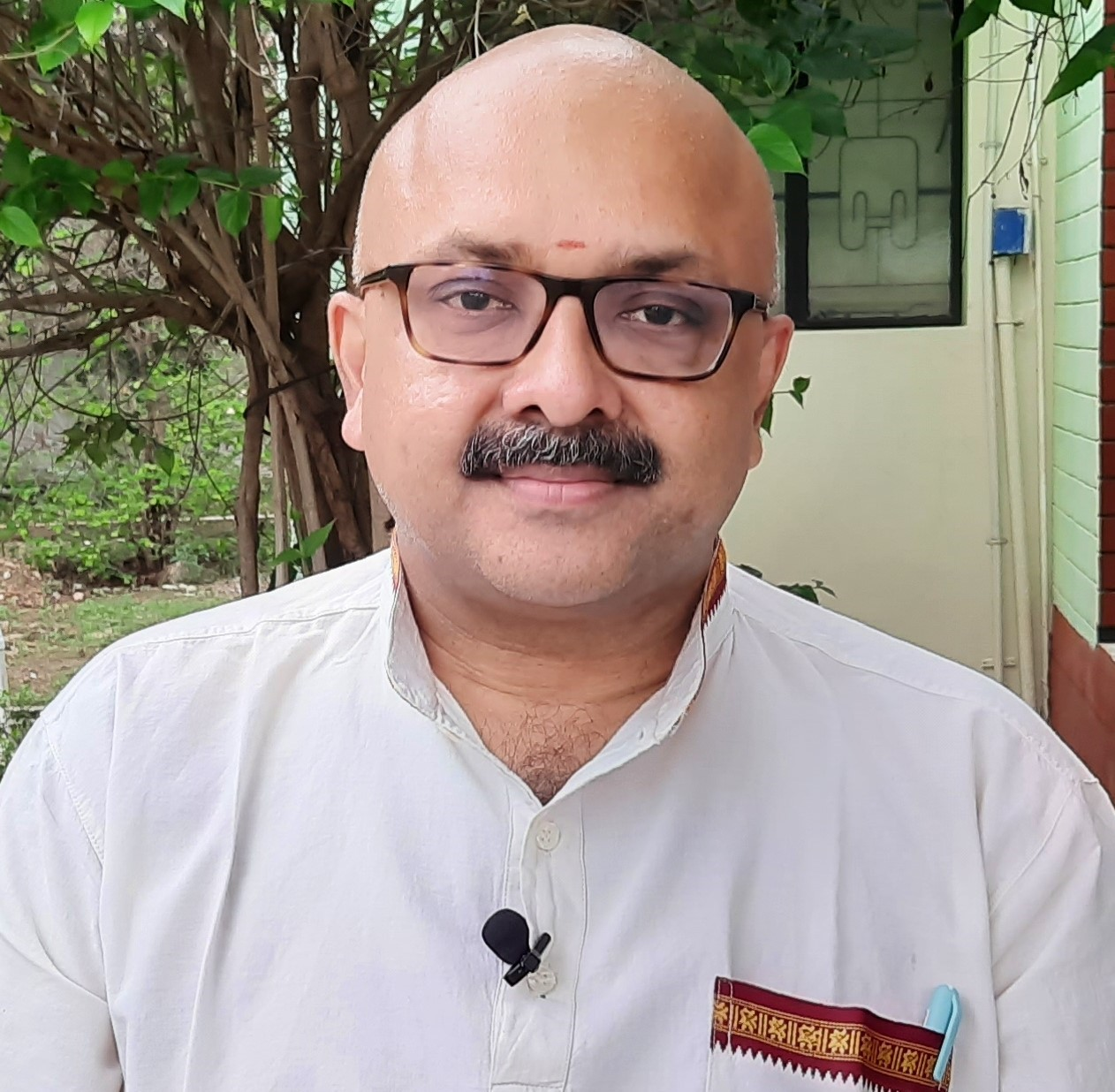
Nagasvaram is a wonderful instrument. This instrument is also known as Nadaswaram and is the double reed aerophone of south India. It has a conical bore and has a flaring wooden bell. The Nagasvaram is considered to be an auspicious instrument. It continues to be used in temples and during weddings. The word ' Getti Melam ' indicates the use of the Nagasvaram along with the Thavil ( percussion instrument ) during the Thirumangalya Dharanam ( tying of the Mangalsutra ) . This instrument is endowed with seven equidistant finger holes on the front side and five additional ones towards the bottom that may be filled with wax to adjust tuning.
Extra reeds and ivory needles for reed adjustment hang from the instrument. The player blows into the reed and uses cirucular breathing. He draws air through his nose and expels it from the cheeks into the Nagasvaram. This creates melody and this is loved by one and all. The movies ' Thillana Mohanambal ' and ' Konjum Salangai ' have added to the popularity and regard for Nagasvaram maestros. There have been numerous Nagasvaram vidwans over the centuries. Many of them have been missed out by chroniclers or perhaps details connected with them may have got lost.
Lovers of music should thank some of the eminent musicians who have shared some details about a number of vidwans. Soolamangalam Vaidyanatha Bhagavathar stands tall among these chroniclers. His impressions are a delight for a music historian. His grandson Ram mohan has been kind enough to get the work translated and recorded. Hats off to such people. We get to know about the times of vidwans like Tirumarugal Natesan due to this kind of chronicling. Tamil Thatha U.Ve.Swaminatha Iyer has also left behind information on some types of music.
We get to learn that Natesan had gained a lot of respect as a Nagasvaram vidwan those days. He revered the mystical qualities of Nadabrahmam and was adept in making people appreciate it. Natesan was an amazing player. His playing of the Nagavaram would draw the attention of both the animate and the inanimate. The Raga Devatha would come to life when he played the Nagasvaram. The listener could experience the presence of the Raga Devatha.
People used to recall a historic event that took place in Karaikudi. Tirumarugal Natesan was to play a concert along with his contemporary , Mannarkudi Chinnapakkiria Pillai. The organizers had put together an sabha of able musicians and their patrons. The idea was to test their individual talent. Pakkiria Pillai was asked to make the auspicious beginning. The vidwan began with the Ragam Kiravani and he piled up musical phrases one after the other. His performance was devoid of repetitions. Pakkiria Pillai played bhrigas at the speed of thought. People began to agree that there was nothing more of Ragam Kiravani to be delineated.

The lovers of music were carried away by the performance so much that they began to wonder that if it would be possible for Natesan Pillai to make his presence felt. The great Natesan Pillai started with Kiravani after this fabulous demonstration. He inserted the Sivali into his instrument and began. No sooner did the nadam emerge, everyone present were stunned and they started to applaud continuously. Natesan Pillai had been blessed by the Lord Almighty.
Chinnapakkiria Pillai was overjoyed and he showered encomiums on Natesan Pillai. He stated that the good deeds committed during the past births of Natesan Pillai had come to fruition. Thereafter , both the artists went to offer a veritable treat to the people present. Both of them were honoured with money and medals by the patrons. Sarbha Sastri had also praised Natesan Pillai. None could elaborate Ragams like Kanada, Atana or Sahana like him. On another occasion, Chemponnarkoil Ramaswami Pillai and Natesan Pillai played together at the ChennakesavaPerumal in Chennai. They were the first pair to win to a win a gold Nagavaram as an award.
The Nagasvaram was once played by the people who worshipped the Naga Devatha. They lived in Nagapattinam and its neighbourhood. The instrument came to be known as Nagasvaram due to its snake like shape. The sweet music that emerged out of it got it the epithet Nadasvaram later on. Earlier, the people played the Thimiri. It was short in terms of length. The famous Nagasvara vidwan T.N.Rajarathinam Pillai had introduced the Nagasvaram with some changes.
Natesa Pillai hailed from Tirumarugal in Nagapaatinam District. His parents were Sivagnanam Pillai and Avayambal. Natesa Pillai had learnt under Marudamuthu Pillai and later from Kuzhikarai Ayyaswamy Pillai. The famous musicians Ambasamudram Kannuswamy Pillai, Nachiyar Kovil Sakthivel Pillai, Pandanai nallur Maragatham Pillai and Ammapettai Pakkiri Pillai had played the Tavil with him. Natesan Pillai had not been blessed with children of his own and therefore he had adopted his sister Govindammal's son Rajarathinam. The adopted son became famous and came to be known as ' Nagasvara Medhai T.N.Rajarathinam Pillai '.
The stories of such instrumentalists will continue to enthrall the world of music. We must remember that the world was smaller those days. Availability of resources and teachers was an issue. Incomes were also not high. Besides all this, the rule by foreigners had caused famines. It must have been quite challenging to take forward the music and its traditions. Therefore the good work and skills of musicians like Tirumarugal Natesa Pillai need to be registered and remembered. This will be the only tribute that we can pay to these stalwarts.
 Mr. Rajesh Govindarajulu is one of the founding members of The Verandah Club Pvt. Ltd. He is a leading columnist, historian, jeweler, entrepreneur, and a heritage enthusiast who is earnestly working to revive the past in the light of the present. Experiential learning about the history of Coimbatore is his main course of interest and he is also a panel member of many colleges in the city.
Mr. Rajesh Govindarajulu is one of the founding members of The Verandah Club Pvt. Ltd. He is a leading columnist, historian, jeweler, entrepreneur, and a heritage enthusiast who is earnestly working to revive the past in the light of the present. Experiential learning about the history of Coimbatore is his main course of interest and he is also a panel member of many colleges in the city.
NEXT ARTICLE